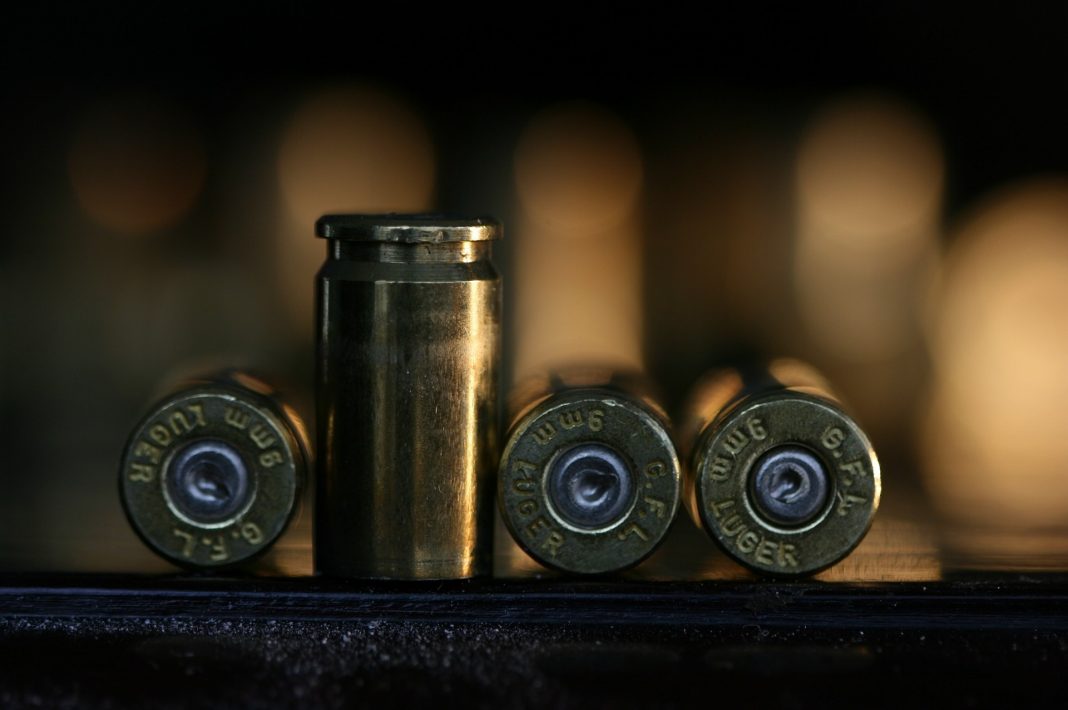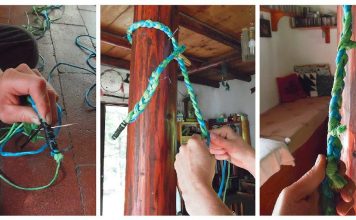 |
|
| Issue #108 • November/December, 2007 |
Ammunition is to firearms as gasoline is to automobiles. However, with guns and ammo, the fit isn’t quite so generic as just getting the right octane rating. Recent events seem to make this the logical topic of discussion for the firearms column this time around…
Proper storage
It was recently announced that OSHA had been considering a new regulation that would require ammunition to be stored with tough new conditions, such as evacuating the premises if a thunderstorm seemed imminent. WHAT?!?!?! Seems that the suggested guidelines came part and parcel from pre-Twentieth Century protocols for manufacture and storage of loose gunpowder, and explosive black powder at that. Fortunately, the National Rifle Association and like-minded groups got on it quickly, and a massive letter-writing campaign of grassroots American gun-owning citizens came down on Washington like a lightning storm in its own right. At this writing, it looks as if this ill-conceived idea has been neutralized. Hopefully, the only way we’ll hear of it again will be if someone does a collection of the most totally boneheaded ideas ever put forth by Washington bureaucracy.
|
What we all do need to know about ammunition storage is simple enough. Don’t smoke or otherwise cause open flames to be around it, particularly in settings where there will be loose gunpowder and, most particularly, black powder. Keep ammo in a cool, dry place. While it is said that conventional ammunition has only a ten-year shelf life, it seems to last darn near forever when properly stored.
Some obsolete gun powders can break down over time, though, becoming unstable and causing danger of a blow-up if fired. Some years ago, the NRA put out a warning on one lot of WWII .30 caliber (.30-06) ammunition, a corrosive powder type, as I recall, that had been sold as surplus later to the tune of millions and millions of rounds. It seems that it was determined that the powder therein was chemically breaking down inside the cartridge case due to age, creating the possibility that it would detonate. While a cartridge’s firing seems like an explosion, it’s actually a very rapid burn, which sets up expanding gases that drive the projectile(s) down the gun barrel and toward the target. A true detonation creates an explosive event that blows up the gun.
Ammunition that has been saturated with water should not, in my opinion, be used. If you’ve been shooting for any length of time, you have probably left one or more cartridges in the pocket of a garment that went through the wash. (Comes out looking clean and shiny, doesn’t it?) I’ve taken some of that out and fired it, very carefully. It always went off. What I mean by firing it very carefully is one shot at a time, and checking the bore, or inside of the barrel, for obstructions after every shot. If the powder charge has been partially or totally dampened and doesn’t ignite, the primer may still go off with enough force to lodge the bullet or shot charge down the barrel. The next live round that follows it, if fired, will meet that obstruction and cause what is known euphemistically in the trade as a “catastrophic event:” that is, the gun blows up in your hands. The best you can hope for is that with low pressure rounds, the second shot blasts the first chunk of trapped lead out of the barrel and only splits it or bulges it. However, even a bulged barrel usually signals the end of the firearm’s accuracy. I had that happen with a fine old Smith & Wesson Model 1955 Target revolver. Before, it had readily put every shot into an inch at 25 yards. After the barrel was bulged, it was all I could do to hit a man-sized silhouette target at 15 yards with the same gun. I had to have a new barrel installed.
A fellow showed up at one of my advanced courses last week with inexpensive Sellier & Bellot brand training ammunition. I have a lot of experience with this brand, and it normally works just fine for its purpose. However, about half of his had gotten wet and, judging by the condition of the cardboard boxes, had stayed soaked for some time before drying out. He had multiple misfires. That is, the primers were dead and the cartridges did not discharge. Actually, a dead primer is much easier to deal with than a “squib load” that only partially discharges, and lodges some lead in the barrel as described earlier. All he had to do was rack the slide of his Springfield Armory XD pistol and jack another live 9mm round into the firing chamber. Still, this is not something you want to have to deal with, and in self-defense ammunition, it can get you killed. The fault lay not with the ammo, but with the storage.
Trying to shoot compromised or probably water-damaged ammunition is a false economy. I’d strongly suggest you get rid of it. The safest way to do that is to wrap it in plastic and bury it deep in the ground.
Do not mix ammunition
In mid-August 2007, I was at the New England Regional Championships of IDPA, the International Defensive Pistol Association, defending the title of Stock Service Revolver champ which I’d held since 2004. It wasn’t my day, and I didn’t win, but I narrowly escaped an accidental humiliation. Here’s how it happened.
|
At major IDPA events, each contestant will be asked randomly at some point to give up six rounds of his or her match ammunition. These cartridges will be tested. One will be disassembled with a device called a bullet puller, and the projectile will be weighed. At least one of the remaining live cartridges will be fired over a chronograph, a device that measures velocity. This is to ensure that the competitor is using ammunition the sport deems powerful enough. In the Stock Service Revolver category, that’s a power factor of 125,000, determined by multiplying bullet weight in grains by velocity in feet per second.
I was using the same combination I’d won the title with the last time around: a Ruger GP100 .357 Magnum revolver, a Blade-Tech holster, and Speer Lawman 158 grain +P .38 Special ammunition. It takes a +P (added power, added powder, added pressure) cartridge to bring my .38 Special up to the required power level. I heard the range officer who pulled the first test bullet out of my sample say, “130 grains.”
“Uh, wait a minute, bro,” I said. “That ain’t my ammo! I’m shooting 158 grain Speer Plus-P.”
He handed me the empty casing from which he’d just pulled the bullet. The headstamp said, “Winchester.”
The plastic bag with the six sample rounds had my competitor number in it. There was no way it had gotten mixed up with anyone else’s. The range officer checked the rest of the package, and found five rounds headstamped “SPEER/.38 SPL +P.” The bullets weighed out to 158 grains, and the live rounds went 849 feet per second on the chronograph, giving me over 130,000 power factor, so I was home free. The lighter bullet, usually loaded slow in the Winchester practice round, never would have made the power cut, and I would have been disqualified.
My girlfriend and I later went through the ammo and found one box that had another couple of rounds of Winchester in it. Prior to leaving on the trip, we had consolidated partial boxes of our match ammo into full ones to save space. Apparently, at some time prior, some 130 grain generic Winchester White Box economy practice rounds had been lying on the shooting bench after a firing session, and at least one wound up being put back into a Speer box. Without looking at the headstamp at the base of the cartridges, they were indistinguishable from one another. Each had a brass .38 Special casing, and a flat-nose copper-jacketed bullet of the same shape.
|
Losing a championship title is something I can take. Been there, done that. Jerry Biggs, the 2007 champion, just flat outshot me (and everyone else in the revolver divisions, which eased the pain!) and I personally congratulated him then and congratulate him now on his outstanding performance. Losing for being disqualified, with the assumption of cheating with light loads that are easier to handle in recoil, is not something that has ever happened to me, and happening by accident would add stupidity to ignominy. I only escaped it because the range officers had seen me loading out of the Speer +P boxes, and there was only one of the wrong kind in the six cartridges taken; the nature of the mistake, as opposed to cheating, had been obvious, so I was OK.
Learn from my mistake. Check all your cartridges beforehand and make sure you’ve got the right stuff.
Failure to do this can lead to more serious things than a match disqualification. I know of one police department that chose the excellent SIG Model P229 as its service pistol, and gave its officers the choice of two calibers: .40 Smith & Wesson, or .357 SIG. About half chose each.
That policy ended after a couple of qualification shoots. Several open boxes of both types of ammo (same brand, same packaging) were on the range. You guessed itcops with .357s loaded some .40 cartridges into their guns, and vice versa.
The .40’s bullet is approximately ten millimeters wide. It won’t fit into the firing chamber of a .357 SIG, which has a bullet about nine millimeters in diameter. The .40 cartridge will jam a .357 SIG before the first shot can be fired.
The opposite mistake is more insidious. The .357 SIG was developed from the .40 S&W cartridge, “necked down” into a bottleneck shape and using a smaller bullet. Therefore, a .357 SIG round will not only go into the chamber of a .40, it will fire from there. However, because the bullet is roughly one millimeter too narrow for the bore, it will lose velocity and “keyhole,” or hit sideways when it reaches the target. Moreover, gas pressure that should be cycling the slide of the pistol goes down the barrel past the bullet and will generally jam the gun after the first shot.
The police department in question put a stop to it, and allowed the rank and file officers to vote on which caliber would be the ONE the department would stay with. The .357 won by one or two votes, and that’s what all the officers there now carry. Lesson learned.
It can happen with other calibers. My friend Michael Bane, who does the popular “Downrange” and “Shooting Gallery” shows on television, tells of a competitor in action shooting who accidentally put a magazine of 9mm Luger ammunition in her .40 S&W caliber Glock 35 competition pistol. The gun jammed at every shot, and she had to cycle the slide before every next shot. The same thing was happeningthe bullets were trundling down the barrel sideways, and there wasn’t enough power to run the action. If she had been fighting off her attacker, the ammunition mistake could have cost her life.
That sort of thing can happen with hunters’ and target shooters’ rifles and shotguns, too. A few years ago at a gun club where I served on the board of directors, I was called out to the range to investigate an injury-producing gun blow up. A member had come out prior to deer season to sight in two hunting rifles, one chambered for .270 Winchester and the other for .308 Winchester. By the time I got to the blood-spattered shooting bench, the hapless gunner was already in the Emergency Room.
|
It seemed that once he got the .308 hitting where he wanted it, he turned his attention to sighting in the .270. However, the two ammo boxes were open on the bench side-by-side, and he had apparently been so focused on his accuracy that he just casually reached over by feel, grabbed a few cartridges, and stuffed them into the second rifle.
You guessed it again. He had loaded .308 caliber cartridges into the .270 caliber rifle. He pushed the bolt forward, locked the bolt handle down, settled his crosshairs carefully on the target 100 yards downrange, and squeezed the trigger…
KA-BOOM!
The .30″ diameter bullet hit a bore only about .27″ in diameter, and could not swage down to fit. In a rifle of the proper caliber, a .308 Winchester hunting cartridge develops an operating pressure in the 50,000 pounds per square inch range. But when the bullet can’t go down the barrel, that pressure increases exponentially and instantly.
The explosion tore the expensive rifle apart, and drove tiny pieces of metal at high speed into the face and eyes of the shooter. Yes, he had taken his glasses off so he could get a better sight picture. The last I heard was that he was going to recover most of his eyesight, eventually…
You would think a .308 caliber cartridge couldn’t fit into a narrower .270 caliber chamber well enough for the bolt to lock, and the gun to fire in the first place. What has to be remembered is that the two cartridges have different overall lengths. Both were derived from the classic .30-06 Springfield cartridge. The .270 is the same length as the .30-06. Both are what might be called “long action” cartridges. The .270’s bullet is not only narrower but lighter, and can therefore be driven at higher velocity and with flatter trajectory, or line of bullet travel. By contrast, the .308 Winchester uses the identical bullet to the .30-06, but in a shorter cartridge casing that in turn allows a shorter overall cartridge length. This allows a shorter action in the rifle, making the gun slightly more compact overall and the bolt action faster to operate by hand.
The .308 was shorter than the .270 cartridge the rifle was chambered for and it was able to go into the .270’s chamber. This is because the main body and case head dimensions, before you get to the neck of the cartridge where the projectile is located, are the same. As the .308 waited in the chamber, the tip of its bullet would have been barely peeking into the rifling of the barrel’s bore. When the rifle discharged, it lodged there…pressure skyrocketed…and in an instant, a fine machine made of tempered ordnance steel blasted apart like a fragmentation grenade.
It happens with shotguns, too. Hunters have warned each other since practically forever to never allow a 20-gauge shotgun shell to enter a 12-gauge’s chamber. The reason is, the diameter of the 20-gauge shell is such that it will slide right through the chamber and down the barrel, lodging partway down. There it waits like an IED. The shooter who pulls the trigger and gets only a click opens the gun, and unless his examination includes the whole interior of the barrel, gets the false impression that he must have forgotten to chamber a shell. So, he now makes sure a 12-gauge round goes into the launch tube. Now, when it fires, the payload strikes the base and primer area of the trapped 20-gauge shell further down the bore. Back pressure from the obstruction in the barrel combines with a shotgun shell going off in a part of the barrel usually too narrow to contain the pressures a heavily constructed chamber is designed to withstand.
|
The result is an explosion that generally takes place right about where the shooter’s forward hand will be on the shotgun’s fore-end. I’ve heard stories of fingers and even whole hands being traumatically amputated at the instant of the shot. Be very careful to keep 20-gauge shells out of 12-gauge shotguns!
Ammo expense
Ammunition, particularly ammunition for practice or competitive shooting, is a commodity. Like soybeans. You can invest in soybean futures but not in ammo futures. If you could have invested in ammunition futures in 2006, you would have become rich in 2007. This was when ammo prices went through the roof. A combination of factors was involved. One was reportedly the huge demand for military ammunition by the United States Government and the Alliance forces for the efforts in Iraq and Afghanistan. Another was a skyrocketing increase in the cost of brass (for cartridge casings), lead (for bullets and shot pellets), and copper (for bullet jackets).
Readers of this magazine understand the first rule of frugality with such things. “Buy it cheap and stack it deep.” I did, and I’m glad. I’ve got enough ammo to get me through a couple of competition and training seasons, at least, and enough carry ammo that I won’t run out. Not everyone is so lucky. I know of police departments that have had to scale back training because of costs that went past a budget prepared last year, and even because of unavailability. One type of ammunition I wanted to order for the police department I serve is so backordered it won’t be available for almost a year, if I get the order in now.
So, lesson one: it is better to have it and not need it than to need it and not have it.
But, let’s talk about lesson two. A lot of folks who came into shooting in the late 1980s and later have been spoiled. This was the time when Pan Metal Corporation (PMC) of Korea stunned the US market by importing cheap, generic, factory fresh ammunition that dramatically undersold the cartridges produced by our indigenous ammunition industry. In desperation, the local companies fought back with their own generic ammo, creating a price war from which the American shooter has benefited hugely.
CCI/Speer countered with their low-priced Blazer line with aluminum casings instead of brass, and more recently their Blazer Brass series. Federal Cartridge brought in their American Eagle economy line. Remington’s version was UMC, and Winchester’s, the USA brand whose packaging led it to be nicknamed “WWB” for Winchester White Box.”
You used to be able to buy a 100-round pack of 9mm WWB for $10.97 at Wal-Mart, before sales tax. It has, at this writing, shot up (no pun intended) to about sixteen bucks. There is much wailing and gnashing of teeth about it on this and that Internet shooting forum.
I understand the sticker shock. However, I’m also old enough to realize that this isn’t price gouging, it’s simply an indication that the gravy train American shooters have been on since the generic ammo price wars started is simply rolling to a halt.
As I write this, a copy of the 1986 Gun Digest is sitting next to the computer on the desk where I’m working. It lists 115 grain 9mm full metal jacket ammo at a manufacturer’s suggested retail price (MSRP) of $22.50 for a box of 50 cartridges. Today’s price for the same stuff is $16 for twice that amount? Let’s have a little perspective here. The same publication lists .45 ACP (Automatic Colt Pistol) jacketed hollow point (JHP) defense rounds at $26.05 for a box of 50. Today, just outside Chicago, I spotted Winchester USA brand 230 grain JHP at a bit less than that for the same sized box at a Dick’s Sporting Goods chain outlet. 21 years of inflation later, I can’t honestly complain about that.
|
Personally, I’d rather buy my guns and ammo from a dedicated gun shop than from a chain such as Wal-Mart. Gun shop owners, as a rule, actively support our civil rights as gun owners, and big box chains, as a rule, don’t. OK, then two weeks ago I stocked up on Federal’s excellent 9BP load, their Classic line 9mm Luger 115 grain JHPone of the most accurate cartridges in its caliber, and one of the best “man-stoppers” in a standard pressure 9mm roundat $12.50 per box of 50 at Riley’s Sport Shop, a famous gun shop in Hooksett, New Hampshire. In 1986, according to Gun Digest, 115 grain 9mm JHP was retailing for $22.50 per 50 round box. Tell me again how we’re being gouged by the ammo industry…
In 1986, by contrast, a pack of cigarettes would have cost you maybe a buck and a quarter or a buck and a half for a premium brand. Today, that same pack of smokes will go you five bucks most anyplace, and seven or eight in New York City…and there ain’t no tobacco shortage.
All things considered, ammo is a better deal. Besides, a cigarette is unlikely to save your life, butdepending how things go for youa well placed bullet just might.
Keep your gunpowder dry and have plenty of ammo on hand. That was George Washington’s implicit advice to the colonists, and it is still good advice today.




















